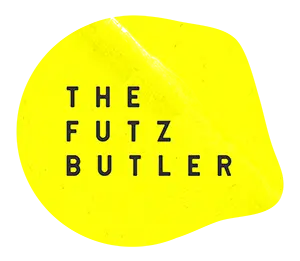In the last 10-15 years most brands have come to realise that simply bombarding consumers with their message, veritably shouting at them, ceases to yield any real long-term benefits, either in terms of sales or loyalty. Granted, there are brands that still do this for ironic effect (Cillit Bang, we’re looking at you here…). But usually they’re doing it in some self-referencing, self-parody of a genre (or advertising more widely).
This invasive approach, equivalent of someone walking alongside you in the street or interrupting the latest episode of (insert box set here) and bleating their message in your earhole, by sheer force of punctuation does mean, on some surface-level at least something of the message ‘goes in’. But more often than not, the consumer doesn’t like it. Quite the opposite in fact…
We all know that today’s currency is resonance. How does this piece of work emotionally resonate and bring us closer together? So why are we still shouting at our audiences with music and sound?
Why is it by default, almost without questioning why, that inevitably so many brands go back to their agencies and production partners with the seemingly obligatory feedback requesting more energy in the track at the end – more tempo, more parts added, more build, more, more, fucking more?
It’s the auditory equivalent of sharp elbows and screaming. It’s braggadocious. It’s Trump-esque. And we feel a lot of the time, it can be largely misguided or worse still, just plain ineffectual.
No One Size Fits All
Now don’t get me wrong, obviously there are plenty of times when a big impactful sound is absolutely what is called for – one that drives a film along and creates dynamism and verve. Of course. Something that grabs the listener’s attention. But let’s just stop and re-read that sentence for a moment. “Grabs” their attention. It’s forceful. It’s presumptuous. It’s aggressive. You don’t win friends with aggression.
Wouldn’t it be better sometimes to earn our audiences’ attention? Through genuine intrigue….
Think of the cut-through and disparity that is created when restraint is employed as an alternative to sheer sonic muscle. Especially when set amongst the current backdrop of music being habitually shoved in the audience’s face (particularly considering a lot of Christmas campaigns are in pre-production at the moment).
By it’s very difference in dynamic, it stands out – it’s anti-obvious.
Listen to the way the use of Foley and room tone only in this Maltesers ad draws you into the spot’s story by creating a stark sonic contrast to the norm (the norm lamentably being the aural clutter of content seeking to bully it’s way into your attention, rather than meriting your curiosity).
Agency, AMV BBDO could’ve easily script this idea and cast it with the characters speaking instead of signing, but by using deaf actors (aside of breaking down inclusivity barriers – kudos btw), they’ve paradoxically created interest through the absence of in-your-face sound, as audiences simply aren’t used to adverts being so quiet, with so little going on. The human ear is naturally acutely attuned to changes in volume and creating notable differences in loudness is a powerful tool to spark engagement in our audiences and be disruptive – but in an absorbing, not forceful way. It is no coincidence that Maltesers’ disability campaign was their most successful in a decade and saw 4% sales growth and an 8.1% uplift while the campaign was on air.
Quiet Storm’s innovative recent spot for Vimto even outwardly addresses the idea.
It would’ve been very easy (and would likely have sailed through client sign-off) to put a big, upfront energetic track on this spot that would’ve researched well with the target market. But that would also have been the obvious thing to do – it would only have re-stated what we’re already seeing in the visuals. It wouldn’t provide anything extra.
Utilising a restrained classical score brings a juxtaposition and wry depth to the visuals, beautifully delivering on the “Refreshingly Different” tag and taking the film somewhere wholly more interesting. Even the VO delivery is relaxed.
And whilst the following Volvo spot from Grey London or even Absolut’s acclaimed Equal Love (BBH) campaign both have musical accompaniment, both resist the need for a well-trodden, saccharine build in the soundtrack. The music itself dynamically is quite understated, which makes the ads feel like they’re not trying too hard – it’s more human, more authentic.
So the green shoots are appearing….
Say It Loud…No wait, in fact speaking it is fine thanks…
The loudness wars are over. Broadcast content, like online and streaming, has new standards of normalisation meaning the loud stuff gets turned down and the quiet stuff gets turned up. Gone are the days of having louder ads than the preceding or following. It just doesn’t work like that anymore. Everything is relative now. And from a purely technical point of view, attempting to make everything bigger in the music often just means you have to turn the track down further for any voiceover or sfx to be heard. So it kind of negates itself.
And a by-product of a more understated score? The overall message comes across clearer as the listener has less to process. It sinks in deeper. Though surprising, it’s a win-win.
Like anything, it’s about knowing when to go through the gears and when to hold back
That’s musicality in itself and it’s no different when used in film. Legendary musician David Crosby recently said “Good musicians know the value of space, the value of quiet, the value of moments of silence.” Amen.
Less is very often more. And sometimes it’s more powerful without music altogether and we often advocate that (despite it obviously talking ourselves out of a gig). Like this lovely VCCP campaign directed by Frederic Plachon for Cadbury’s. Music and sound like any ingredient need to justify its existence there – it needs to bring something that hasn’t already been said, or says it differently, or adds perspicuity.
Or look at this beautiful spot for this year’s comic relief from our friends over at Pulse Films. The absence of music altogether in preference for the calm and understated nature of diagetic sound genuinely pulls you into the story.
Who’s the Guv?
We understand that very often it is the clients themselves (not the agency or filmmakers) concerned primarily with the bottom line, who put quite simply, equate more energy and a huge gushing build to more reddies in the bank. “It creates more impact”, they’ll say. Maybe. So does a shot put to the bollocks. Doesn’t mean it’s a good idea. And it doesn’t mean it’s the most elegant solution to connect with an audience.
Impact doesn’t have to mean big or forceful – it can be achieved in a deeper way through poise and calm
Music can evolve and take the listener on an emotional arc without having to throw the kitchen sink at them and being understated often resonates more than brute force. It’s effortless – it imparts its own sense of taste. It’s real. It retains its own integrity.
Change up the Default
It’s entirely understandable that it isn’t exactly second-nature for brands, agencies and filmmakers to think in terms of the abstract nature of sound, and what the audio could or should be doing. Most calling the shots on a project generally come from a visual background, rarely from a sound or musical proclivity. So as is often the case, the way that the audio is approached by default is last to catch up to the trend.
Which is why we as composers and mix engineers collectively need to show better initiative at the brief stage, and help creatively suggest engaging ways to counter the cliched.
We’re not saying that all films should be made with a gentle, softly softly approach to music or sound. Bloody hell, no. We’d probably all slip into some sort of musically-induced, digital lethargy. All we’re suggesting is that creative teams simply employ the same thinking and approach they’re already utilising throughout the rest of the film-making process, in the sound and music.
Earn loyalty – don’t snatch at it. If we seek to make truly innovative and intelligent films, we need to address the notion that “bigger is better” as the default position when it comes to music and sound design.
If it’s always Go Big or Go Home? Yeah, fuck that, just go home.…


